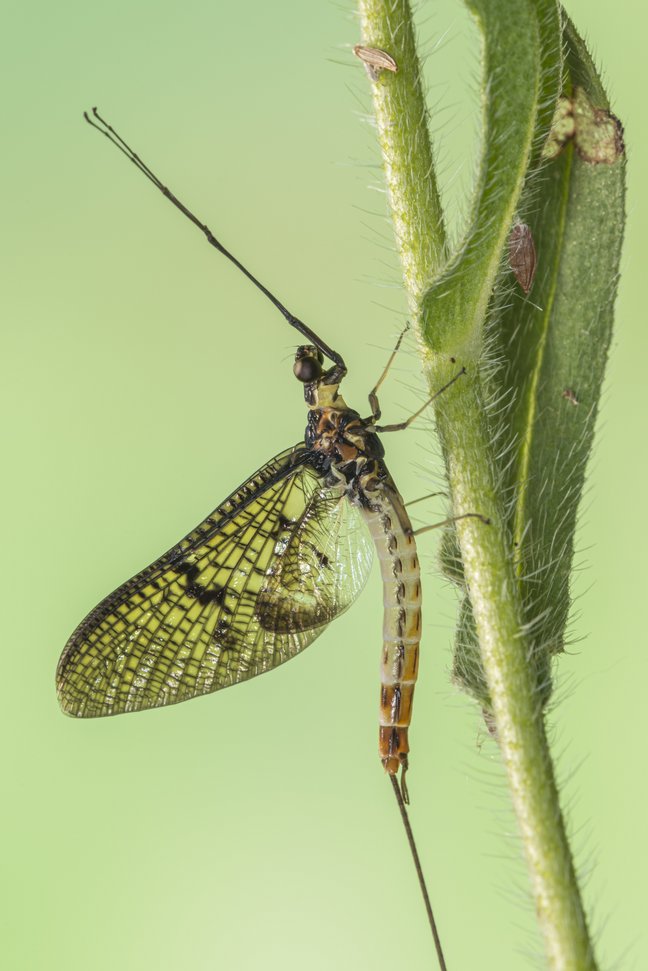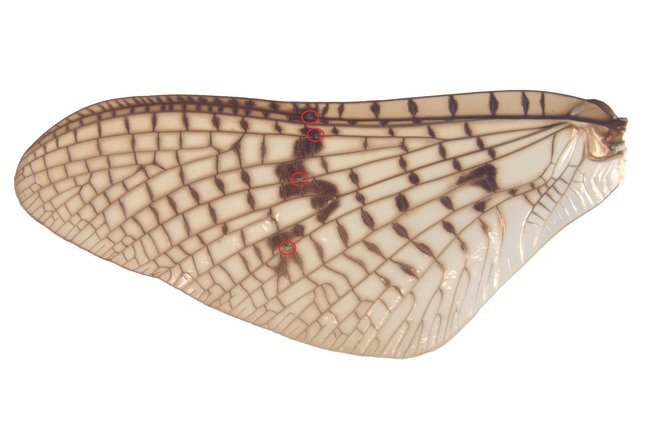Short-lived and yet older than you might think: mayflies are a rather primeval group of insects and display some characteristics and traits that more "modern" insects no longer possess. These include their primitive body structure. In contrast to many other flying insects, such as flies or mosquitoes, their wings still have a corrugated structure with rigid longitudinal veins. The longitudinal veins alternate between high and low, giving the wings stability. However, some of these veins are interrupted in the centre of the wing by flexible bubble-shaped "weak points", the so-called bullae. Until now, the prevailing opinion was that these bullae played a key role in the flight of the ancient flutterers. An international team led by Dr Arnold Staniczek, curator of aquatic insects at the Natural History Museum in Stuttgart, has now been able to prove that the bullae have a completely different area of application and also provide insights into the early evolution of flying insects.
For a long time, it was assumed that the flexible areas in the longitudinal vein allowed the outer half of the wing to bend in order to reduce air resistance during wing upstroke. However, high-speed recordings of the flight of the mayflies made by Staniczek's team showed that the wing veins remain stable during every movement.
The solution to the riddle of the membranous weak spots lies in another special feature of mayflies. While the larval stages of most flying insects directly hatch into adult animals that are capable of flying and reproduction, mayflies have an additional developmental stage that lies between the aquatic larva and the adult insect. This intermediate stage, the subimago, is capable of flight, but cannot yet reproduce and after a short time moults into a reproductive adult, the imago.
Slow-motion recordings of the moult from subimago to imago finally showed the true function of the bullae: In order to free the new wings from the old wings' moult sheath, the animal lifts the wings, which then bend at the defined weak points and thus enable them to be pulled out of the old wing undamaged.
The team was also able to prove that the bullae are missing in the wings of the few mayflies with modified or lost subimaginal moulting. Therefore the bullae prove to be a reliable marker with which subimaginal moulting can be proven in fossil species. For example, when analysing fossil species the existence of bullae was proven in a 272 million year old mayfly ancestor from the Permian period . The small "bubbles" in the wings of the mayflies thus provide direct evidence that their Permian ancestors moulted their wings in the same way. This is important evidence that subimaginal moulting is indeed an ancient feature from prehistoric times that has only been preserved in mayflies.


